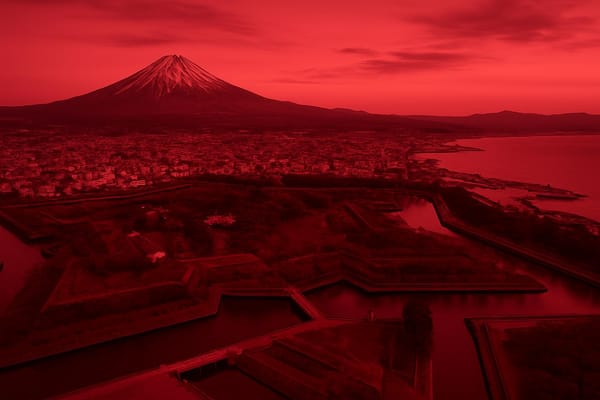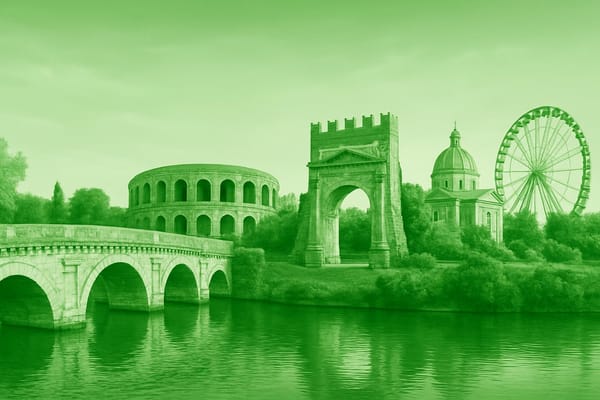Kyoto
Experience ancient temples, bamboo groves, geisha districts, tea ceremonies and cherry blossoms.

Important things to know about Kyoto
Kyoto, Japan unfolds as a city where history and contemporary life interweave, offering a textured urban experience defined by refined tradition, seasonal rhythms and enduring craftsmanship; its streets move between quiet residential lanes and bustling market arteries, while the pace of daily life is punctuated by the meticulous practices of artisans, the slow ceremony of tea, and neighborhoods that preserve social rituals alongside modern conveniences. The built environment reflects layers of time - from wooden machiya townhouses and subtle garden courtyards to modern infrastructure - creating a sense of continuity that shapes how residents work, dine and socialize. Culinary culture in Kyoto emphasizes subtlety and seasonality, with local ingredients and culinary techniques passed through generations, echoing the same patient care found in textiles, ceramics and lacquerware produced by dedicated artisans. Educational institutions, research centers and a lively artistic community further contribute to a dynamic intellectual scene, while festivals and community gatherings keep calendar time anchored to the seasons, celebrating spring’s cherry blossoms, summer’s heat, autumnal color and winter stillness in distinctly local ways. The city’s language of space-narrow lanes, riverbanks, and neighborhood markets-fosters personal encounters and a strong sense of place that makes everyday life in Kyoto feel both intimate and cosmopolitan; whether experienced through the warmth of a local shopkeeper, the cadence of commuter flows, or the quiet of an early morning, Kyoto remains a living portrait of culture, continuity and careful reinvention.
Sightseeing hot-spots in Kyoto
Kyoto, Japan, is a timeless city where traditional culture and modern life blend seamlessly, making it a top destination for sightseeing and travel. Strolling through the historic streets, visitors encounter an extraordinary concentration of temples and shrines that tell the story of centuries. The iconic Fushimi Inari Shrine with its thousands of red torii gates offers a unique, photogenic hiking route, while the serene gardens of Kinkaku-ji (the Golden Pavilion) reflect sunlight over still waters and showcase exquisite Japanese aesthetics. Every corner of Kyoto invites exploration of history, from ancient tea houses to carefully preserved machiya townhouses.
A walk through the Gion district reveals the atmospheric lanes where geisha and maiko continue traditional performing arts, and Kiyomizu-dera perches on a hillside with panoramic views that capture the city’s seasonal beauty-cherry blossoms in spring and crimson leaves in autumn. For nature lovers, the Arashiyama bamboo grove provides an almost otherworldly experience as sunlight filters through towering stalks, while nearby rivers, hills, and temples add to a complete Kyoto itinerary. Markets like Nishiki offer culinary discoveries, from pickles to matcha sweets, deepening the sense of local culture and cuisine.
Planning a trip to Kyoto means balancing iconic highlights with quieter, off-the-beaten-path temples and neighborhood shrines that reveal the everyday life of this historic Japan city. Photographers, history buffs, and foodies alike will find endless inspiration here, where every season reshapes the palette of streets, gardens, and temples. Whether your visit focuses on spiritual sites, traditional performances, or tranquil natural settings, Kyoto remains a compelling, must-see destination for international tourism and cultural discovery.
Hotels to enjoy in Kyoto
Kyoto offers a rich spectrum of hotels in Kyoto that blend centuries-old charm with modern comfort, making it a top destination for travelers seeking authentic Japanese experiences. From serene traditional ryokan and restored machiya townhouses near Gion and Kiyomizu-dera to contemporary luxury hotels clustered around Kyoto Station, Kyoto hotels cater to every taste and budget. Many properties emphasize local craftsmanship, tatami rooms, and seasonal kaiseki dining, while others focus on minimalist design and convenient access to subway and bus lines. Whether you want a quiet stay by the Kamo River, a boutique hotel tucked into historical neighborhoods, or a high-rise with skyline views, accommodation in Kyoto often places you within walking distance of temples, shrines, and immersive cultural experiences.
Choosing the right hotel can transform your visit, and searching for the best hotels in Kyoto means balancing location, amenities, and seasonal highlights like cherry blossom season or autumn foliage. Travelers looking for affordable hotels in Kyoto will find guesthouses and business hotels that offer clean, efficient rooms near public transport, while families and luxury seekers can choose larger hotels with on-site restaurants and concierge services. Close proximity to transport hubs makes exploring Arashiyama, Fushimi Inari, and central Kyoto effortless, and many Kyoto hotels now emphasize sustainability and local food sourcing. Booking in advance during peak travel months and reading recent reviews will help you find the right fit for your itinerary and ensure a memorable stay in this culturally vibrant city.
Restaurants to try in Kyoto
Kyoto restaurants offer a unique blend of traditional and contemporary dining that draws food lovers from around the world. From intimate machiya tea houses serving seasonal kaiseki to bustling stalls at Nishiki Market where you can taste street-food specialties, the city presents an authentic culinary journey. In historic districts like Gion and Pontocho, wooden storefronts and lantern-lit alleys lead to refined dining rooms where chefs craft multi-course meals using local, seasonal ingredients such as yuba, fresh river fish, and Kyoto vegetables. Visitors seeking the ritual of Japanese cuisine will appreciate the slow-paced elegance of kaiseki and the ceremonial presentation of matcha and sweets, creating memorable sensory experiences that define Kyoto’s gastronomic reputation.
Beyond classical offerings, Kyoto restaurants also cater to modern tastes with high-quality sushi, comforting ramen, and inventive izakaya small plates that pair well with sake. The city supports a growing vegetarian and vegan scene, where shojin ryori (Buddhist temple cuisine) provides plant-based, umami-rich options. For those after exclusivity, omakase counters and Michelin-starred establishments highlight seasonal terroir and meticulous technique. Whether you’re exploring market alleys, reserving a riverside table in Arashiyama, or savoring street bites near Kiyomizu-dera, the diversity of Kyoto dining-rooted in tradition and refreshed by contemporary creativity-makes it a top destination for culinary discovery.
Best shopping stops in Kyoto
Kyoto’s shopping scene blends centuries of tradition with contemporary style, making shopping in Kyoto a delight for visitors looking for authentic souvenirs and culinary treats. Stroll through the famous Nishiki Market to sample and purchase artisanal food items like matcha, handcrafted wagashi sweets, pickles, and premium tea leaves-perfect omiyage to bring home. Around Kawaramachi and the covered arcades of Teramachi and Shinkyogoku, you'll find a lively mix of trendy boutiques, specialty stores, and hidden vintage shops offering everything from minimalist Japanese fashion to quirky stationery. Department stores and small independent retailers cater to both luxury shoppers and bargain hunters, while seasonal festivals and craft fairs spotlight local artisans, making Kyoto shopping rich in variety and cultural depth.
For lovers of craftsmanship, Kyoto is synonymous with traditional arts: Kiyomizu-yaki ceramics, lacquerware, bamboo crafts, and yuzen-dyed kimono are standout purchases that reflect the city’s heritage. In Gion and Higashiyama, elegant boutiques and atelier shops sell bespoke kimono, obi, and accessories alongside delicate jewelry inspired by temple motifs. Antique shops and galleries offer unique finds for collectors, and food-focused stores sell premium soy sauce, pickles, and confectionery that embody Kyoto flavors. Whether you search for high-quality Japanese ceramics, handcrafted textiles, or local culinary specialties, these shopping highlights of Kyoto promise memorable, authentic purchases that capture the essence of the city.
Nightlife highlights in Kyoto
Kyoto’s after-dark scene blends traditional atmosphere with modern energy, making Kyoto nightlife uniquely compelling. Strolling through the Gion district and the narrow, lantern-lit lanes of Pontocho reveals tea houses and intimate izakaya where the hum of conversation and clinking glasses echoes Japan’s rich culture. For quieter evenings, a walk along the Kamo River or the softly illuminated streets near Kiyomizu-dera offers peaceful night views and the chance to spot geisha moving between appointments. Meanwhile, Kawaramachi and the area around Kyoto Station provide more contemporary options, from stylish cocktail bars to cozy pubs that stay lively well into the night.
When you want to explore the best nightlife in Kyoto, you’ll find a little something for every taste: sake bars serving regional brews, tiny live music venues featuring jazz or indie acts, and friendly karaoke rooms where locals and travelers mingle. Seasonal night illumination events at temples create unforgettable backdrops, and rooftop or riverside seating turns a simple drink into a memorable night out. Whether seeking traditional evening charm or the buzz of modern bars and clubs, Kyoto’s nightlife spots deliver a balanced, atmospheric experience that keeps visitors coming back after dark.
Getting around in Kyoto
Kyoto itself does not have an international airport, so travelers typically use Kansai International Airport (KIX) or the nearby Itami (Osaka International) Airport for access; Kansai offers excellent rail connections including the Haruka limited express that reaches JR Kyoto Station in around 75 minutes and regular Kansai Airport Rapid services that require a transfer in Osaka, while Itami is primarily served by efficient airport limousine bus services into central Kyoto and Osaka since it lacks a direct rail link. Once in the city, Kyoto’s rail situation is centered on JR Kyoto Station, a major hub for the Tokaido Shinkansen (bullet train) with fast connections to Tokyo and Osaka, and a dense network of local operators-Keihan, Hankyu, and Kintetsu-that provide frequent, punctual services ideal for sightseeing and regional travel; the compact subway network (Karasuma and Tozai lines) complements these options and ties into extensive bus services for temple and historic district access. For visitors prioritizing convenience, the combination of direct airport express trains, reliable shuttle buses, and Japan’s famously punctual trains makes reaching Kyoto and navigating the city straightforward, whether arriving from abroad or traveling around the Kansai region.
Culture must-see's in Kyoto
Kyoto, Japan is the enduring heart of traditional Japanese culture, where ancient temples and shrines meet narrow streets lined with wooden machiya and serene Zen gardens. Visitors drawn to Kyoto for cultural experiences discover world-famous sites such as Kiyomizu-dera, Kinkaku-ji, and Fushimi Inari, alongside lesser-known temples that host seasonal matsuri and tea gatherings. The city's UNESCO-listed heritage and historic districts like Gion invite travelers to witness geisha culture and elegant kimono aesthetics, while tea ceremony demonstrations and tranquil tea houses showcase the refined rituals that define Kyoto’s identity. Rich historical layers - from imperial courts to samurai-era patronage - make Kyoto a top destination for anyone researching the best cultural attractions in Japan.
Beyond landmarks, Kyoto’s cultural highlights include hands-on artistic traditions and culinary excellence that shape unforgettable travel experiences. Savory kaiseki cuisine and vibrant matcha-based sweets reflect the region’s attention to seasonality, while artisan workshops preserve pottery, textiles and lacquerware crafts that visitors can learn about or try themselves. Performances of Noh and traditional music, stays in a ryokan, and exploring markets such as Nishiki reveal everyday life steeped in ritual and refinement. For travelers seeking authentic cultural experiences and top Kyoto attractions, the city offers a rich, searchable tapestry of history, food, art and ceremony that consistently ranks high in travel guides and cultural itineraries for Kyoto, Japan.
History of Kyoto
Kyoto's history stretches back to 794 when Emperor Kanmu established Heian-kyō as the new seat of power, marking the start of the Heian period and the long era in which Kyoto functioned as Japan's imperial capital. As the cradle of classical Japanese culture, Kyoto became the setting for courtly refinement, poetry, and literature-most famously The Tale of Genji-and the birthplace of aesthetic ideals that shaped tea ceremony, Noh theater, and traditional arts. Over centuries, the city evolved through the Kamakura, Muromachi, and Azuchi–Momoyama periods, each leaving architectural and cultural layers visible in the urban layout, palace compounds, and temple gardens. The arrival and flourishing of Buddhism led to the founding of monumental temples such as Kinkaku-ji, Ginkaku-ji, and Kiyomizu-dera, while Shinto shrines like Fushimi Inari Taisha anchored community worship. Kyoto’s streets also fostered artisan guilds and refinement in crafts-textiles, ceramics, and lacquerware-that still define local industries and appeal to cultural tourism focused on Kyoto, Japan historical experiences.
Despite political shifts-most notably the Meiji Restoration of 1868 that moved the governmental capital to Tokyo-Kyoto maintained a central symbolic role and preserved a remarkable number of historical sites. The city’s survival through wars and modernization allowed it to retain an authentic cityscape of wooden machiya townhouses, tranquil temple precincts, and the geisha districts of Gion, where traditional performance arts continue. Recognized internationally for its concentration of cultural assets, Kyoto is home to many entries in the UNESCO World Heritage list, collectively celebrated as the Historic Monuments of Ancient Kyoto, and it draws visitors to festivals like Gion Matsuri that showcase seasonal rites and community identity. Today, Kyoto’s history is a living resource that informs urban conservation, sustainable tourism, and contemporary creative industries, making it a perennial focus for anyone researching Kyoto history, Japanese heritage, or the interplay between tradition and modern life.



